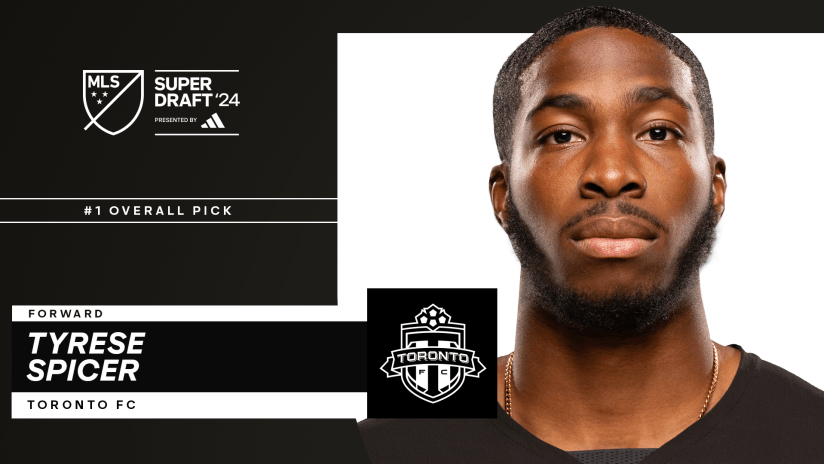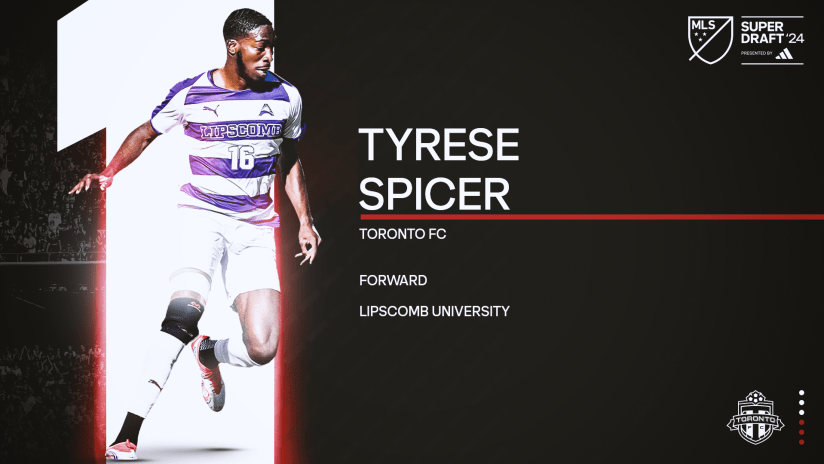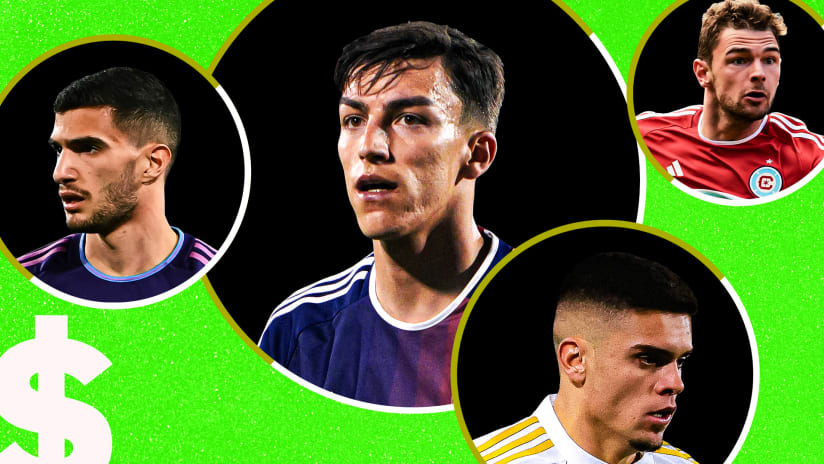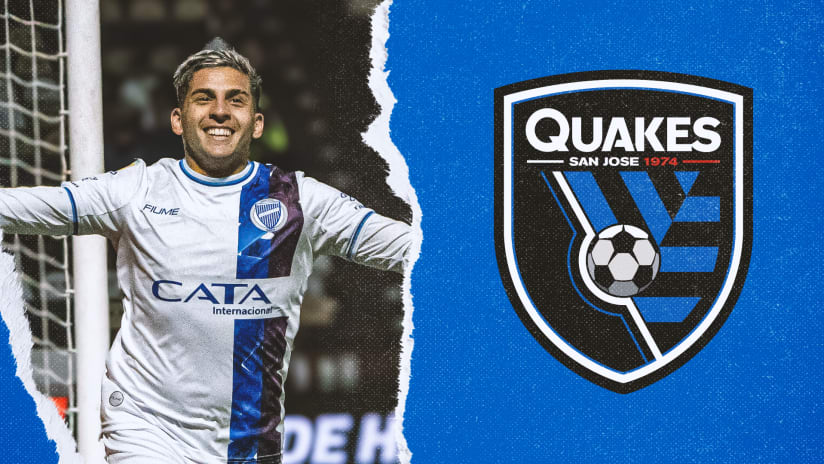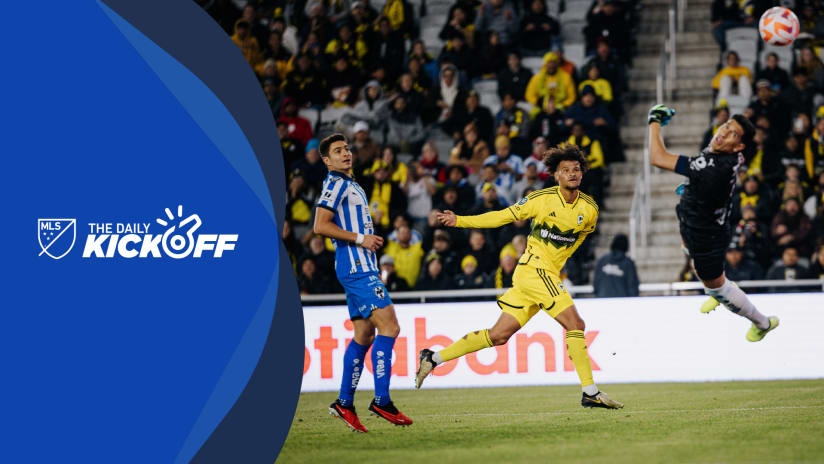If the act of drafting itself is an inexact science, then the process of plucking a first-year impact player from the draft pool is something like beaming up a moving target to the Starship Enterprise.
It is difficult. The point is that it’s wildly difficult.
Take the 2014 MLS draft as an example. Cal center back tandem Steve Birnbaum and Christian Dean went No. 2 and No. 3 that year, Birnbaum heading east to D.C. United and Dean up the coast to Vancouver a pick later. Both were more or less on even footing in terms of scouting reports, and there were a fair amount of prognosticators who saw more out of Dean than Birnbaum. Point was, the gap between the two was so small daylight couldn’t find its way through.
Now, three years later, the difference is obvious. Birnbaum is a US national team-capped MLS All-Star. Dean has nine total appearances for the Whitecaps. The latter might get his first real crack at Vancouver's starting lineup this year, but hindsight is a heck of a teacher. Birnbaum was more ready out of the gate.
That leads us to the 2017 MLS SuperDraft in Los Angeles this week. We know about overall prospects -- that is, players who project as MLS stars over a period of years. But what about 2017? Which draftees have the potential to be ready to go out of the box?
Here’s my top 10.
10. Daniel Johnson, Louisville
Like fullbacks, starting caliber wide midfielders aren’t exactly in ready supply in MLS. Midfielders comfortable careening in off the left in particular are even rarer, making Louisville left mid Daniel Johnson a true endangered species when it comes to the MLS draft. Johnson’s probably done as much as anyone to raise his personal stock at the MLS combine this week with his eye-opening performances. But that’s more or less what he’s been doing at Louisville, where he developed into one of college soccer’s most terrifying inverted wingers.
As a right-footed wide midfielder coming off the left, there’s space for Johnson in a system that values play down the central channel with an overlapping left back. Johnson creates room for both, and his technical prowess and soccer IQ leave the door open for serious minutes in 2017.
9. Walker Hume, North Carolina
When the Colorado Rapids drafted Axel Sjoberg in the first round of the 2015 draft, questions about his mobility hit him hard. At 6-foot-7, would he be able to keep up with the pace of the league? Could he track runners in space, or would he be exposed on the ground? The worries, as we know now, were unfounded. Sjoberg emerged in 2016 as one of the league’s best defenders. That’s a decent starting point for Walker Hume, one of the biggest players in the draft pool at 6-foot-5.
Hume’s movement at that size is a frank revelation, and he’s surprisingly spry in getting to ground to knock challenges out of the box. If learning from the past is vital in adjudging the future, then taking the lessons learned from assessing Sjoberg should work in applying a keen eye to Hume. There’s no reason he can’t go in 2017.
8. Jacori Hayes, Wake Forest
A certain subset of talent evaluators always have trouble evaluating size. Or, should I say, a lack of it. MLS’s long-held reputation as a league not lacking in physicality tends to warn teams off diminutive attackers with unclear roles in the attack when it comes to draft time. Schillo Tshuma, Enzo Martinez and Michael Tetteh are all recent cautionary tales. Meanwhile, more broad-shouldered tweeners like Tesho Akindele, Marlon Hairston and Khiry Shelton thrived.
Jacori Hayes is in the smaller mold, but his versatility as a collapsing winger or central midfield possession backboard gives him more immediate value than most. His history in a pro-ready college system should prep him well for the next level, and don’t let his size fool you. He’s ready to go now.
7. Brandon Aubrey, Notre Dame
There’s a reason defenders are plucked off the board so early with such abandon. Three of the first four picks in 2016 were defenders, for instance, and the back four is mined more often than any other position statistically in first rounds over the life of the draft. Defenders are, in essence, safer picks because their skill set tends to translate more directly to the pro game. There’s less of a curve. And as far as one-to-one fits go, Notre Dame center back Brandon Aubrey is about as sure as it gets.
Don’t let his down performance at the combine fool you. Better players have played worse at the event and suffered no appreciable consequence on their actual play. Aubrey is a wonderfully talented center back with all the tools to be a stand-in in 2017.
6. Jackson Yueill, UCLA
This is a tricky one. Creative attackers are notoriously fickle when it comes to next-level talent translation, and Jackson Yueill appears to be no exception. On the college level, there was no one who could match his level of vision and sideline-to-sideline distribution. That will serve him well wherever he goes, and he remains a staunch prospect for those reasons. But he’s a system guy, and he won’t fit in a revved up attack that prefers to push pace and numbers and inelegantly kicks its midfielders and forwards over the ramparts.
Yueill needs a patient midfield surrounded with pass-oriented teammates, and if he gets that he’ll have time and space to develop in 2017. The good news is that MLS has more of these minds than ever. If Yueill can find himself paired up with an Adrian Heath, a Jesse Marsch, a Gregg Berhalter or an Oscar Pareja, expect fireworks sooner rather than later.
5. Abu Danladi, UCLA
I’ve not been shy about ranking dynamic UCLA attacker Abu Danladi my No. 1 overall pick, but there’s a caveat there. Draft prospects aren’t always about immediate impact. There’s a projection there, too. Having a guy step in and score 12 goals his rookie year is clearly a nice perk of the pick. But having a guy score double digits over years - regardless how he does his first year - is ultimately the sweeter prize. Danladi is a spritely forward with an injury-filled past who risks being kicked out of games.
Given the right atmosphere he’ll almost certainly thrive in the league, but whether or not his first year goes swimmingly is more unclear. He has a good shot to hit the ground running, but it’s not a stretch to expect him to need an adjustment period first.
4. Chris Odoi-Atsem, Maryland
There was an invariable consistency about opposing attacks when facing Maryland in 2016. On the occasions Chris Odoi-Atsem was splayed wide right in the defensive architecture, teams rarely tested him, preferring to route attacks centrally and to Maryland’s defensive left. The reason was elementary; Odoi-Atsem is a rolling human boulder of a defender. A natural center back, the only reason Odoi-Atsem isn’t ranked above Denver's Reagan Dunk is because he has less time at right back, where he’ll be as a pro. That’ll mean a slight learning curve, which shouldn’t take long for him to flatten.
Watch Josh Yaro’s 2016 game film at right back and you’ll understand why it’s possible. In the long run Odoi-Atsem might be the stronger right back than Dunk, but for now the two are comfortably nestled at 1-2 at a position of perpetual need in MLS.
3. Reagan Dunk, Denver
So many MLS teams made do with substandard starting fullbacks that to see them tottering along in the draft pool is like a Sahara-bound wanderer stumbling upon an oasis. Reagan Dunk spent almost the entirety of his latter developmental years as a right back, a rare specialized breed of defender at a position nearly every team in the league needs in one form or the other. When you hear Dunk compared to the likes of Keegan Rosenberry, that isn’t an accident.
Dunk is steady, surprisingly confident against speedier attackers in space and has excellent recovery speed. You won’t find a more comfortable fullback on either side of the ball, and none so specialized that they’d be as comfortable stepping into a starting role off the bat.
2. Jeremy Ebobisse, Duke
Most might’ve been stunned when MLS extended Jeremy Ebobisse a contract five months before the MLS draft, but with talent this rounded you do what you need to do to make sure it stays home. Historically, Cyle Larin was a big deal for rookie forwards in MLS. It’s a difficult position from which to make an immediate imprint, but Larin (and then Jordan Morris in 2016) proved it’s more than possible. No forward has more immediate bonafides than Ebobisse, the most out-of-the-box ready forward in the draft. Whether or not his ceiling is ultimately higher than Abu Danladi’s, he looks like the safer pick for the immediate future and the one who can do more damage in 2017.
1. Miles Robinson, Syracuse
The more talent evaluators see of Miles Robinson, the more he tends to shoot up collective draft boards. Robinson’s been playing up in age for the majority of his career, which will no doubt help him cope as a precocious 19-year-old defender in a sea of veterans. The US have always struggled to produce pro-ready creative midfielders - especially wingers - but defenders are a different story. It’s the “easiest” transition from college to pro in the sense that outright skill is less important than IQ and athleticism.
Robinson, who still has an uphill battle for minutes, has both in ample supply. He has the frame and skill set to be ready in 2017. The question is whether an enterprising coach will give him a chance.




